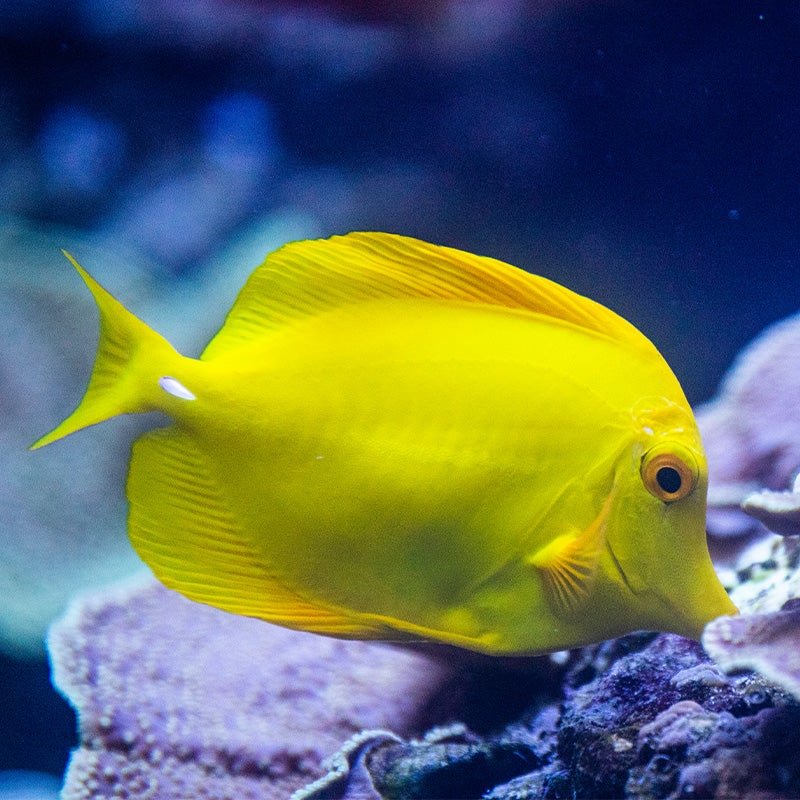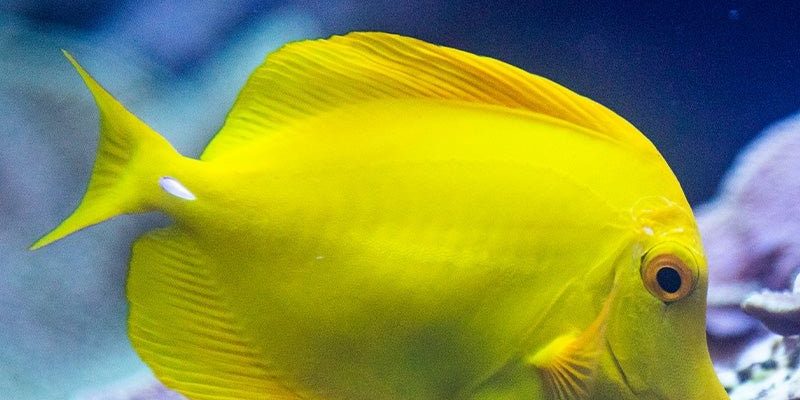
You might be wondering why these fish are so popular in homes and aquariums. They’re native to the stunning reefs of Hawaii and have become a beloved part of the aquarium trade. But there’s a lot more to them than their bright color and friendly demeanor. So, let’s explore ten cool things you probably didn’t know about the Yellow Tang!
1. Native Habitat: The Coral Reefs of Hawaii
Yellow Tangs are originally from the Hawaiian Islands, thriving in the warm waters of the Pacific. These fish love the coral reefs, where they find food and shelter. Imagine living in an underwater city where vibrant corals serve as your home! They’re mainly found in shallow waters, typically around 3 to 15 feet deep, bustling about among the coral formations.
Here’s the thing: Yellow Tangs are herbivores, munching on algae and plant matter that grow on the reefs. By grazing on algae, they actually help keep the reefs healthy and clean. So, not only are they pretty to look at, but they also play a vital role in their ecosystem. Wild Yellow Tangs are social creatures, often found in groups, which makes for a lively underwater scene.
2. Their Stunning Coloration
The bright yellow coloration of these fish isn’t just for show— it’s a key part of their survival. This vibrant hue acts as a signal to other fish. In a way, it’s like wearing a flashy jacket that says, “Hey, look at me!” While this makes them attractive to aquarists, it also helps them communicate with each other.
As they mature, Yellow Tangs can change color slightly, developing a more subdued tone that helps them blend into their environment. This ability to change isn’t just for style; it’s also a great survival tactic when predators are near. So, if you think about it, being yellow is more about social life than mere looks!
3. Fun Fact: They Can Be Territorial
You might not expect such a cheerful-looking fish to be territorial, but Yellow Tangs can be quite protective of their space. When they feel their territory is threatened by other fish, they can display aggressive behaviors. Picture a feisty little fish defending its turf!
In the wild, they will chase off intruders, especially during mating season. This behavior can also appear in home aquariums. If you’re thinking about adding a Yellow Tang to your tank, keep in mind that having more than one can lead to squabbles. It’s best to either have just one or create a spacious environment where they feel comfortable cohabitating with others.
4. Lifespan: A Long-Lasting Companion
Yellow Tangs are not just a pretty face—they can live for quite a while! In the wild, they can reach up to 20 years of age. In captivity, with proper care, they can also enjoy a long life, often living over 10 years. This longevity means you’re signing up for a long-term aquatic friend if you bring one into your home.
However, their lifespan can greatly depend on the quality of care they receive. A well-maintained aquarium with proper water parameters, a balanced diet, and enough space will help your Yellow Tang thrive. Think of it as giving your fish a good quality of life, like ensuring a comfortable home for a beloved pet.
5. They Have Unique Swimming Styles
If you’ve ever watched a Yellow Tang swim, you’ll notice they have a distinctive style. They tend to dart around quickly, often stopping abruptly to nibble on algae or explore nooks and crannies of the reef. It’s like watching someone glide effortlessly on the dance floor—each movement planned and purposeful!
Their flattened bodies allow them to maneuver through tight spaces in the reef, which is crucial for avoiding predators and searching for food. Next time you see a Yellow Tang, pay close attention to their graceful movements. It’s not just swimming; it’s an art form in the aquatic world!
6. Social Creatures: They Love Company
Yellow Tangs are social fish that thrive in the company of their own kind. They often form schools, swimming together in a friendly fashion. This behavior helps protect them from predators—there’s safety in numbers!
In captivity, this social nature can mean they may get lonely if kept alone. If you’re considering a Yellow Tang, think about either having more than one or making sure they have plenty of companionship with other compatible fish. Just imagine a school of bright yellow fish dancing through your aquarium; it would surely add a lively vibe!
7. They Require Special Care
Taking care of a Yellow Tang isn’t just about filling the tank with water and hoping for the best. They have specific needs, especially regarding water conditions. They thrive in saltwater tanks, which should mimic their natural environment as closely as possible.
Here are some key points to keep in mind for their care:
- Water Quality: Maintain a stable temperature between 72°F and 78°F and keep the salinity around 1.020-1.025.
- Diet: Make sure they get a mix of algae, spirulina, and high-quality flakes or pellets.
- Tank Size: Provide a minimum of 75 gallons of space for them to swim freely.
By paying attention to these factors, you’re creating a welcoming home that allows your Yellow Tang to flourish.
8. A Popular Choice for Aquarists
So, why are Yellow Tangs such a hit among aquarium enthusiasts? Well, aside from their striking appearance, they’re relatively hardy and can adapt well to home environments if cared for properly. Their playful and active nature makes them a joy to watch, too!
Not to mention, they’re often seen as a beginner-friendly option for those venturing into saltwater aquariums. While they do require specific conditions, once you get the hang of it, they can be a delightful addition to your aquatic family. Plus, who doesn’t want a bright splash of yellow in their tank?
9. The Role of Algae in Their Diet
As mentioned earlier, Yellow Tangs are herbivores, which means their diet mainly consists of algae. This might sound simple, but the type and quality of algae are incredibly important for their health. In the wild, they can graze on various species, but in captivity, you’ll need to provide a diverse diet.
Here’s a tip: offering sheets of dried algae or seaweed can be a great way to keep your Tang happy and well-fed. It’s like serving a tasty salad that they can nibble on throughout the day. When you watch them munching away, you can see how much they enjoy it—it’s a feeding frenzy!
10. Conservation and Environmental Impact
Lastly, it’s essential to consider the impact of keeping Yellow Tangs as pets. Overfishing and habitat destruction in their native waters have led to a decline in their populations. This means it’s crucial to source your fish responsibly. Make sure you buy from reputable sellers who follow sustainable practices.
You might also want to think about the benefits of supporting aquaculture instead of buying wild-caught fish. Choosing sustainably raised fish can help protect natural populations and keep the reefs healthy for generations to come.
Yellow Tangs are more than just a pretty face in the aquarium—they’re lively, social creatures with fascinating traits. From their vibrant colors to their playful nature, they bring a splash of life to any tank. By understanding their needs and the ecological impacts of keeping them, you enable a delightful and responsible fish-keeping experience. So, whether you’re a seasoned aquarist or just someone looking to learn a bit more, the Yellow Tang has plenty to offer. Embrace the joy they bring, and enjoy the underwater magic!

